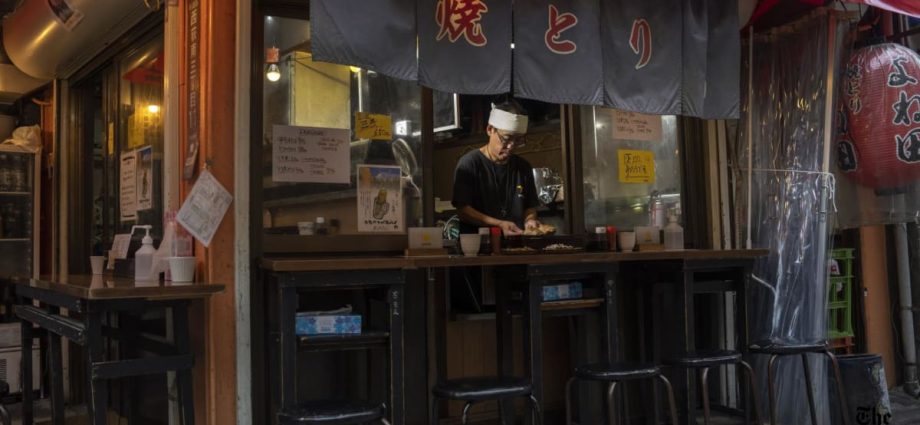
“That’s why you’re on skewer prep for three years before touching the grill,” Hiro said.
At Yakitori Yoneda, just south of Nishi-Ogikubo Station, I found myself noticing how the tsukune, or chicken meatballs, arrives perfectly charred, a tiny bit sweet, with a perfect spring to the bite from that potato starch added to the mixture the night before grilling.
I tuck in under the red awning away from the rain with a skewer of medium-cooked chicken livers, another of crispy chicken skin. The tsukune here is plump, the size of a small zucchini. And when it arrives with its diced onion and jammy soft fried egg, I enjoy it even more for recognising the perfect execution. It’s still one of the best plates I’ve had in Tokyo over many visits.
Yoneda also illustrates another point: You don’t have to spend a ton of dough to have these “best bite” moments. Good, inexpensive yakitori in Tokyo is going to run you around 400 yen, or about US$2.65, for a couple of skewers. I think cooking classes actually lower the price of pleasure by allowing you to see how great the technique can be in many everyday Tokyo restaurants.
The Michelin-starred Kondo restaurant has brilliant tempura, no question. But so, too, does Ginza Hageten, just down the road and at a fraction of the price. Here, the lunch crowds stream through, jazz burbles in the background, and your vegetable tempura, rice and bowl of noodles all comes together.
I had the same experience exploring tonkatsu, that ubiquitous panko-fried pork loin that often comes alongside a pile of shaved cabbage. It’s ethereally good at Butagumi, where, amid woody elegance, you can choose from dozens of pork varieties and where nobody in the dining room is allowed to wear perfume. But it’s also pretty great at Danki Tonkatsu, around the corner from the Demboin shrine in Asakusa. When I ate there with Yukari Sakamoto, the author of the guide Food Sake Tokyo, we sat shoulder to shoulder with whoever else just happened to be hungry and walking by.

